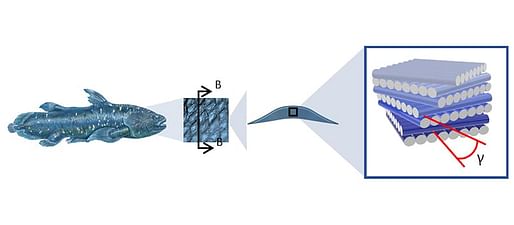
Researchers at Princeton University’s Engineering School have developed a method for 3D printing concrete with improved crack resistance. Taking inspiration from fish scales, the team led by assistant professor Reza Moini claims their design increases resistance to cracking by as much as 63% compared to conventional cast concrete.
Princeton’s method drew inspiration from the double-helical structures that form the scales of an ancient fish lineage named coelacanths. The resulting design sees concrete arranged into individual strands, with robotic 3D printing used to weakly connect each strand to its neighbor.
“The researchers used different design schemes to combine many stacks of strands into larger functional shapes, such as beams,” Princeton explains. “The design schemes rely on slightly changing the orientation of each stack to create a double-helical arrangement (two orthogonal layers twisted across the height) in the beams that is key to improving the material’s resistance to crack propagation.”

According to the team, the system’s improved resistance to cracking revolves around a combination of shielding cracks from propagating, interlocking the fractured surfaces, and deflecting cracks from a straight path once they are formed. The team hopes that robotic 3D printing will further allow for the creation of complex concrete shapes not possible through conventional casting.
News of the innovation comes one month after the University of Maine unveiled details of its experiments with 3D-printed floor panels made from recyclable natural materials. In July, meanwhile, ICON’s first 3D-printed CODEX homes came onto the market in Texas. During the initial unveiling of CODEX, Archinect spoke with both Bjarke Ingels and ICON’s Melodie Yashar on the topic of 3D printing in architecture.
4 Comments
Can anyone explain to me how 3d printed concrete buildings incorporate rebar?
https://www.youtube.com/watch?v=2PrCzW5tdV8
Woodbury university did a solar decathlon project last year out of 3d printed concrete in the same manner as this video I believe. It was permitted and built in Los Angeles, so it's all been worked out for the requirements in high seismic areas even.
The steel reinforcement (both horizontal & vertical) is essentially equivalent to the requirements for CMU walls.
Block this user
Are you sure you want to block this user and hide all related comments throughout the site?
Archinect
This is your first comment on Archinect. Your comment will be visible once approved.